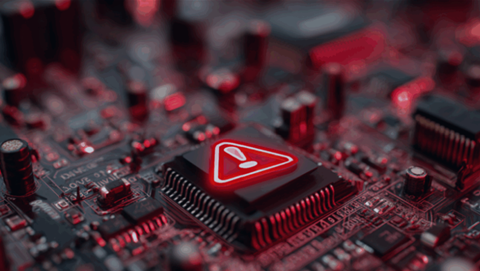Generative AI (Gen AI) is growing at an exponential rate, bringing transformative potential to businesses across the globe. From automating processes to driving new business models, AI promises enhanced performance and competitive advantages. However, as the adoption of AI continues to accelerate, it also raises significant concerns - particularly around IT infrastructure, security, and network performance.
After speaking with business leaders and CTOs in Singapore, Console Connect found that 82 percent were concerned that the rapid adoption of generative AI (Gen AI) could have lasting consequences for their IT infrastructure. Simultaneously, 80 percent of IT teams feel increased pressure to adopt Gen AI within their organisations.
While Gen AI offers many opportunities, the challenges it brings are substantial. These include data security risks, compliance issues, network capacity limitations, and the rising costs of cloud services. To successfully leverage Gen AI, businesses must adopt strategies that mitigate these risks and ensure their network infrastructure can handle the growing demands of AI workloads. Network-as-a-Service (NaaS) is emerging as a key solution to address these concerns.
Understanding the Risks of Generative AI
Generative AI models rely on vast datasets and intensive computational power, often transferring large amounts of data between on-premises systems and cloud environments. This constant data exchange, typically through public cloud platforms, introduces several risks.
The top concern is the ongoing transfer of data between an organisation’s network and the cloud that increases the likelihood of security breaches. More than half (58 percent) of IT leaders in Singapore believe Gen AI exposes their networks to greater cyber threats, with a global figure of 71 percent. These vulnerabilities highlight the need for businesses to secure their data and mitigate the risks of unauthorised access or cyberattacks.
As data moves across borders, organisations must ensure they are in compliance with regional regulations regarding data sovereignty. This can be a particularly complex issue when using third-party cloud services. Unmanaged Gen AI usage in business applications introduces additional risks, such as the potential for sensitive data exposure or inadvertent disclosures.
Another significant concern is network resilience. Gen AI's massive data transfers can overwhelm existing network infrastructures. The survey found that 81 percent of Singaporean IT leaders believe their current network infrastructure is insufficient to fully support Gen AI. Without adequate bandwidth and infrastructure, AI applications may experience network congestion, higher latency, and even internal disruptions such as denial-of-service (DoS) attacks.
Further, the increased movement of data between on-premises systems and the cloud can significantly raise egress charges - fees for transferring data out of cloud environments. This can become a costly issue for organisations managing large AI workloads.
How NaaS Can Mitigate GenAI Risks
NaaS provides an ideal solution to address the challenges posed by Gen AI. By offering scalable, flexible, and secure network infrastructure, NaaS can help businesses better manage their AI deployments while reducing the associated risks.
NaaS provides advantages such as:
- NaaS routes traffic over private, secure networks rather than the public internet, reducing the exposure of sensitive data to cyber threats. This closed-loop system helps protect data from unauthorised access, ensuring that AI-generated information remains secure.
- As Gen AI increases data movement, NaaS can help minimise the risk of external breaches by providing a more secure network path for critical business data, which is especially important for organisations handling sensitive customer information or proprietary data.
- Gen AI workloads can cause sudden spikes in data traffic. NaaS offers the flexibility to scale network resources as needed, ensuring that businesses can accommodate these surges without compromising performance. This adaptability is crucial for AI applications that require consistent, low-latency processing.
- By optimising data transfer, NaaS reduces network congestion and latency, ensuring real-time performance for AI tasks. This is particularly important for applications that depend on immediate data processing, such as machine learning models and real-time analytics.
- NaaS enables seamless connectivity between different cloud platforms, data centres, and on-premises environments, supporting both hybrid and multi-cloud strategies. This flexibility enhances network resilience by providing redundancy and ensuring that AI operations are not disrupted by network failures.
It also improves the reliability and speed of data transfer across cloud environments, ensuring that AI applications can operate smoothly even during periods of heavy data flow. - With the increasing demands of Gen AI, egress charges for cloud data transfers can become a significant cost burden. NaaS helps optimise data transfer paths, potentially cutting egress costs by up to 50 percent. This is particularly valuable for businesses looking to control cloud-related expenses while managing large-scale AI operations.
- NaaS operates on a pay-as-you-go model, enabling organisations to scale their network resources according to their needs. This flexibility allows businesses to optimise their cloud infrastructure and reduce unnecessary overhead, making it easier to manage fluctuating AI workloads.
Looking ahead
The rapid rise of generative AI offers significant opportunities for businesses, but it also presents serious challenges in terms of security, performance, and cost. As organisations increasingly adopt AI, they must ensure their network infrastructure can support the growing demands of AI workloads. NaaS provides an effective solution to mitigate these risks by offering secure, scalable, and flexible network infrastructure that can adapt to the needs of AI applications.
As organisations look to the future, adopting NaaS will be crucial for ensuring a smooth, secure, and cost-effective AI implementation, enabling them to fully unlock the potential of generative AI.









